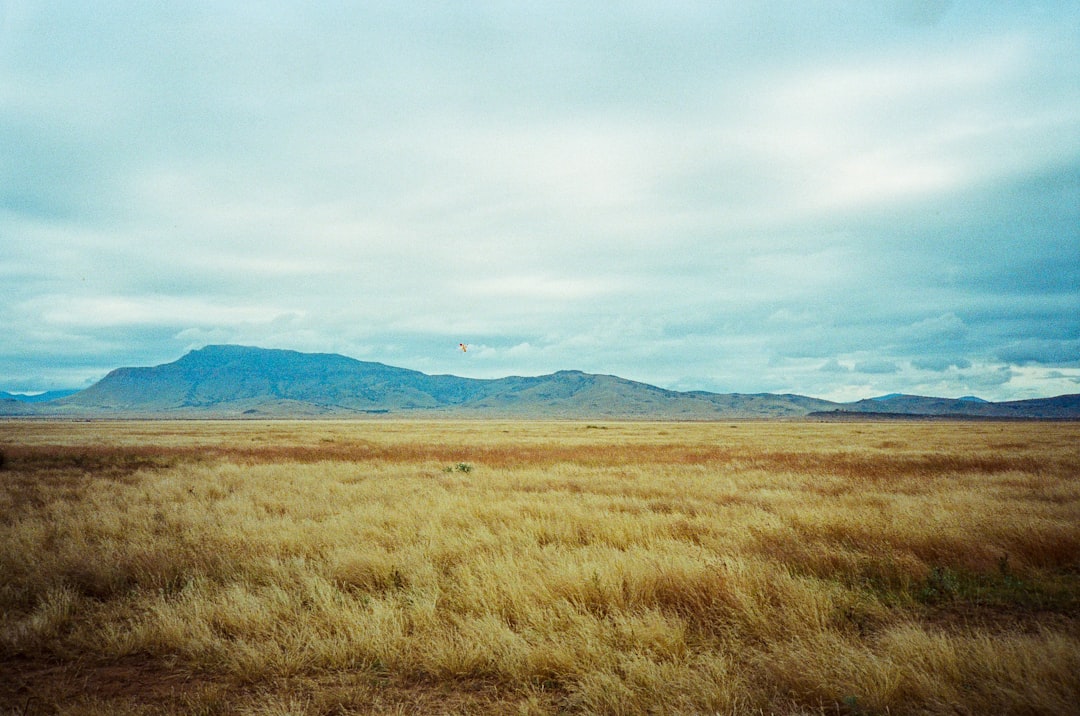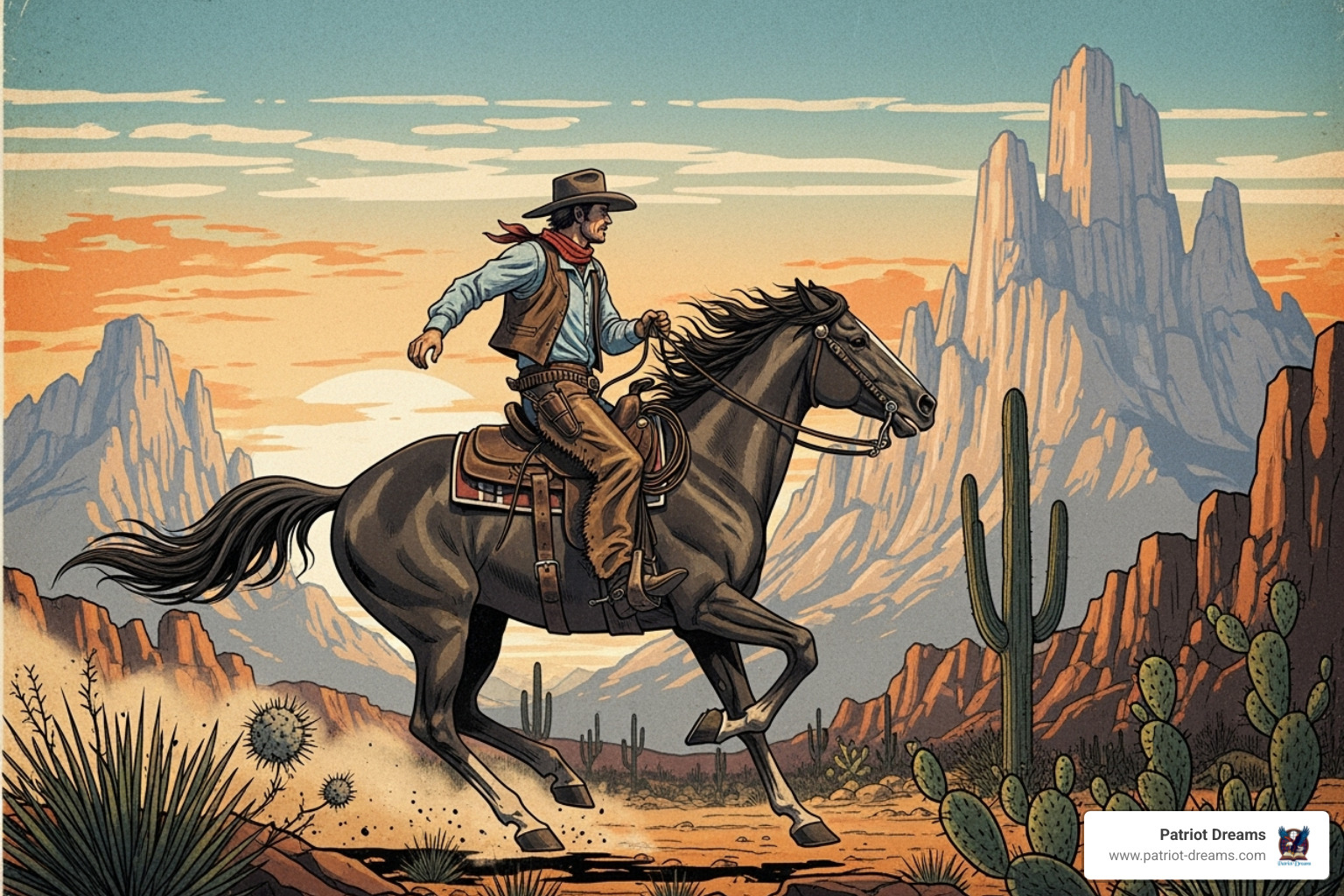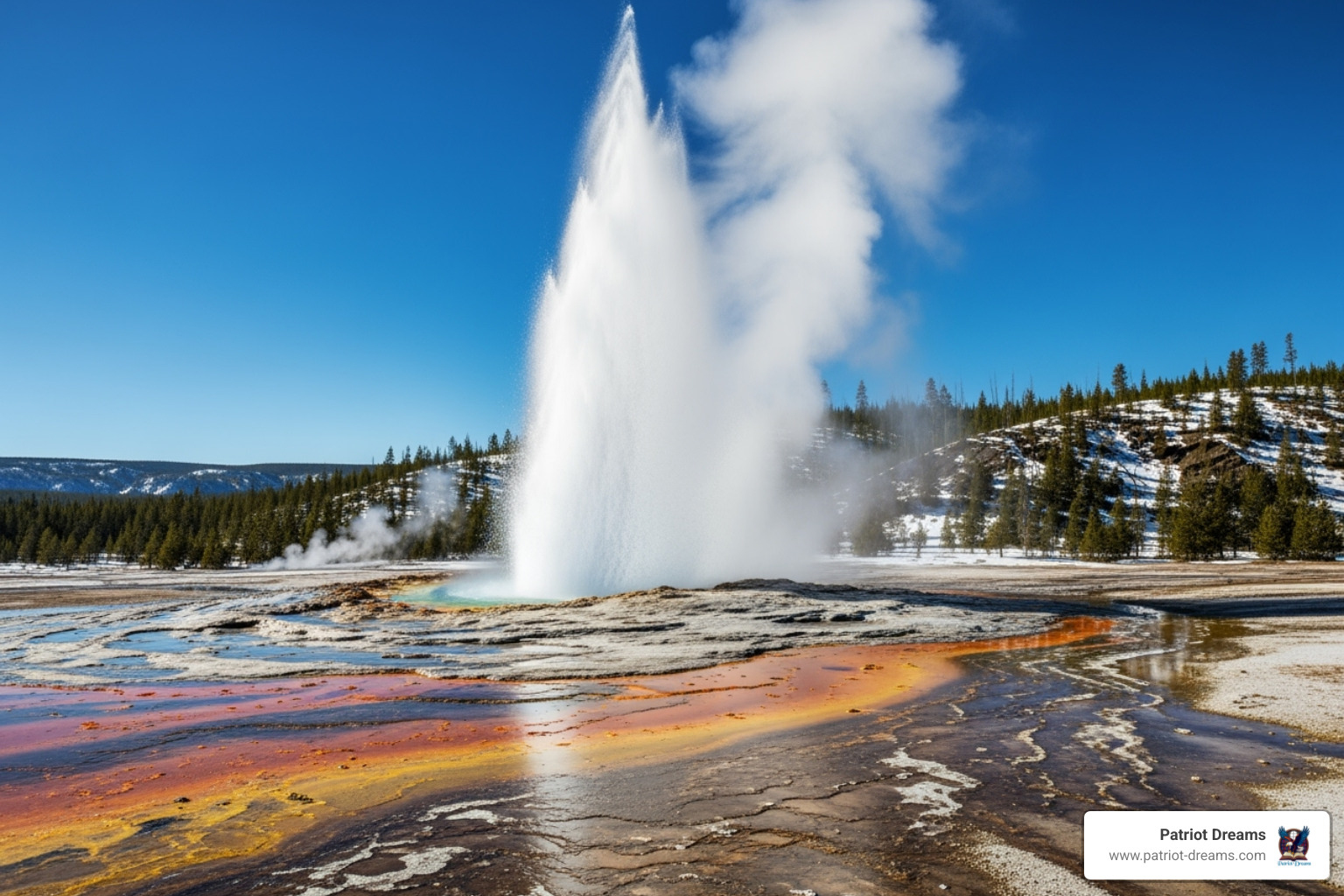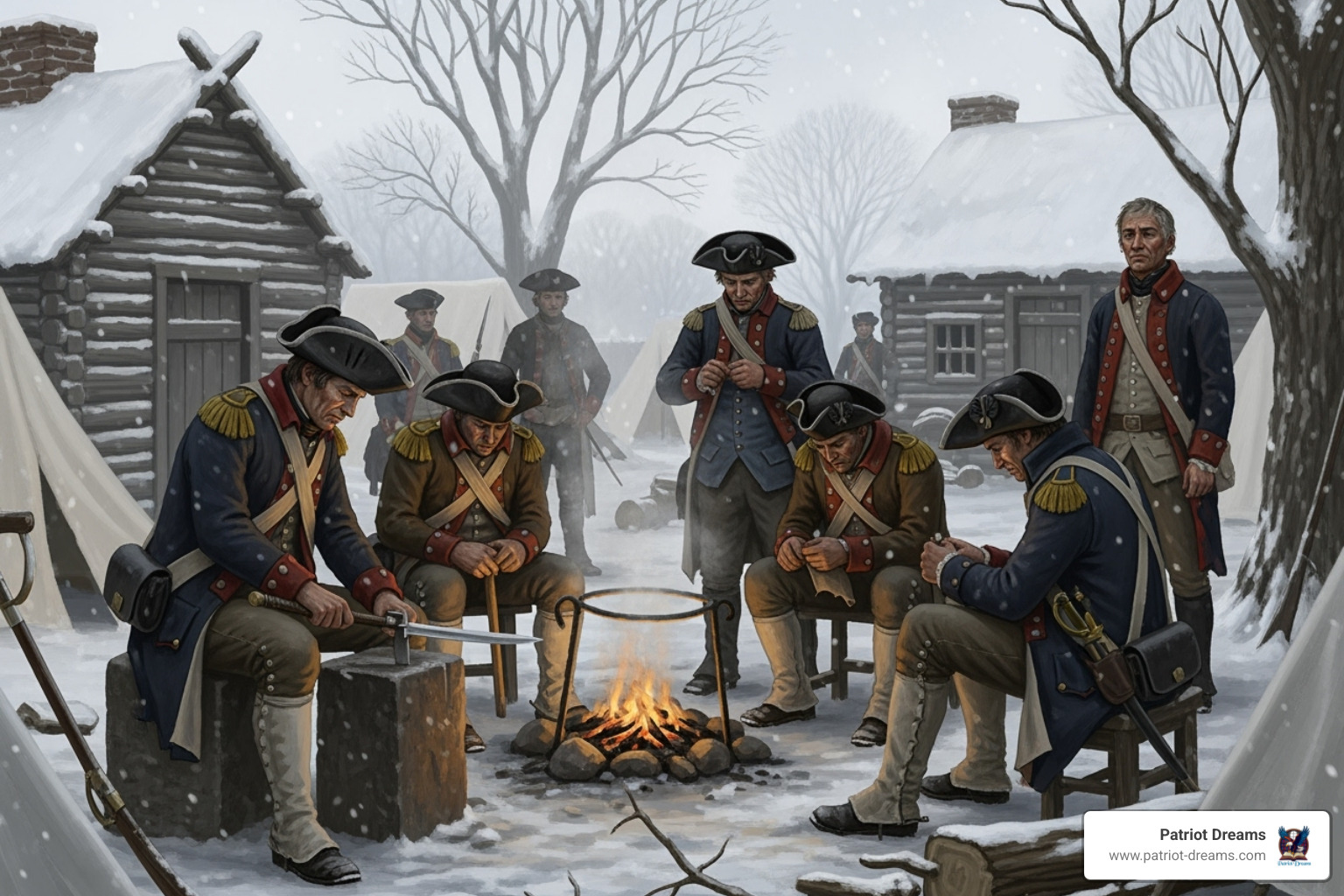The Frontier Myth Today: What the Old West Tells Us About Modern America


Why the Old West Still Speaks to Us Today
The Frontier Myth Today: What the Old West Tells Us About Modern America continues to shape how we see ourselves as a nation. The spirit of exploration and self-reliance, born on the prairies, remains a defining part of the American character.
Quick Answer: What the Frontier Teaches Modern America
- Self-Reliance - The belief that anyone can build a better life through hard work
- Opportunity - The idea that new frontiers offer fresh starts and possibilities
- Community Spirit - Neighbors helping neighbors, even in challenging times
- Optimism - A can-do attitude that faces challenges with hope and determination
- Innovation - The drive to explore, invent, and push beyond known boundaries
In 1893, historian Frederick Jackson Turner declared the American frontier closed, but the stories born from those wide-open spaces never left us. They are woven into the fabric of who we are.
We still see ourselves as pioneers, not just in old Westerns, but in how we approach life's challenges. When we talk about "new frontiers" in technology or space, we're drawing on that same spirit. When we celebrate an entrepreneur, we're echoing the homesteader who turned wilderness into a home.
These stories matter because they connect us to timeless values like courage, resilience, and the belief that tomorrow can be better than today. The frontier myth isn't just about the past; it's about the enduring American belief in possibility and the power of community and individual determination.

The Enduring Spirit of the Pioneer: How Frontier Stories Shaped American Values
The tales of pioneers crossing vast prairies or neighbors gathering to raise a barn aren't just history; they're part of who we are. The Frontier Myth Today: What the Old West Tells Us About Modern America lives on because these stories speak to values we still hold dear: courage, hope, and community.
The frontier experience gave us archetypes like the rugged cowboy and the steadfast pioneer. They embody self-reliance, the belief that we can shape our own destiny, and resilience in the face of challenges. Just as importantly, they show us the power of community spirit—that sense of neighbor helping neighbor that built America.
Think about the California Gold Rush. It was about opportunity, but it was also about ordinary people risking everything for a better life. That same spirit of optimism has inspired generations of Americans to reach for something greater. These stories created a national identity forged through shared experience, offering a roadmap for how we see ourselves: as a people who can always begin again.
The Cowboy and the Pioneer in Our Hearts
These archetypes live on because they represent the best of what we aspire to be. The cowboy stands for freedom, adventure, and a personal code of honor. The pioneer represents hard work, perseverance, and the idea that great things happen when communities pull together.
These figures haven't faded; they've found new expressions in modern stories of exploration and innovation. The key themes remain: the journey into the unknown, the struggle against adversity, and the triumph of the determined individual or the tight-knit community.
What makes these figures so enduring is that they celebrate the everyday acts of courage and kindness in every community. They remind us that heroism is about showing up for your neighbors, working hard for your family, and believing that tomorrow can be better than today. The stories of the frontier gave us a shared narrative of hope, resilience, and new beginnings.
The West in Our Imagination: How Stories and Media Created a Legend

The American West we carry in our hearts is a story shaped by generations of storytellers. The Frontier Myth Today: What the Old West Tells Us About Modern America owes its power to the way these tales captured our imagination.
The legend of the West was built as much from words and images as from wood and iron. In the late 1800s, dime novels offered thrilling adventures, while artists like Frederic Remington brought the frontier to life on canvas. Buffalo Bill Cody’s Wild West show then took the story on the road, blurring the line between history and entertainment for audiences worldwide.
When movies and television arrived, the West found its perfect home. From The Great Train Robbery in 1903 to the thousands of Westerns that followed, Hollywood made the frontier a central part of American culture. TV shows in the 1950s and 60s brought these heroes into our living rooms, shaping how we saw ourselves as a nation. These American Pioneer Stories helped define how the world saw America, too.
From Campfire Tales to the Silver Screen
The frontier myth grew from campfire tales to silver screen epics. The iconic imagery—wagon trains, lone heroes, and vast landscapes—became symbols of American ideals. These stories often gave us moral clarity, a world where courage mattered and one person could make a difference.
The mythic West celebrated rugged individualism, freedom, and self-reliance. As the nation became more urbanized, these stories offered a connection to a simpler time. Even today, the spirit of the Western lives on in modern action films and space adventures. The classic plot, with its journey into the unknown and triumph over adversity, keeps appearing in new forms, reminding us that some stories never really end.
The Frontier Myth Today: What the Old West Tells Us About Modern America
The spirit of the Old West didn't vanish; it just found new places to roam. The Frontier Myth Today: What the Old West Tells Us About Modern America shows up in laboratories, in space, and in the workshops of entrepreneurs. The setting has changed, but the heart of the pioneer remains.
These modern frontiers carry forward that same belief in a fresh start and the opportunity that lies beyond the next challenge. President John F. Kennedy tapped into this when he spoke of a "new frontier" of unknown opportunities. That same spirit animated leaders like Teddy Roosevelt: The Fearless Leader Every Young American Should Know, who embodied fearless leadership. The spirit of invention and American optimism that drove covered wagons west now propel us toward the stars.
New Frontiers: Exploring Beyond the Horizon
A frontier is still a place where opportunity meets risk and the future is written in real time. Today’s pioneers might wear lab coats or space suits, but they share a belief in progress and human ingenuity.
The digital frontier, scientific findy, and space exploration are today's vast, unknown territories. The bravery required to launch into space reflects the courage it took to head west into the unknown. This drive to explore, find, and build is not just our history; it's our present and future. We remain, at heart, a nation of explorers.
What the Old West Tells Us About Modern America
The frontier myth has given us a powerful narrative about perseverance and hope. It celebrates a can-do attitude and the idea that hard work can overcome obstacles. This quest for findy continues to drive American innovation.
We must also hold this narrative with understanding. Historians remind us that the real frontier was more complex than the myth, and expansion came with costs. Understanding these complexities, as explored in works like Richard Slotkin's Gunfighter Nation: The Myth of the Frontier in Twentieth-Century America, enriches our appreciation for the full story. The American spirit isn't about perfection—it's about the courage to keep trying, building, and reaching for the horizon.
New Perspectives on an Old Story: Gaining a Fuller Understanding

Every great story grows richer with a fuller understanding. The tales of westward expansion deserve to be told with all their complexity, acknowledging both triumphs and challenges. For a long time, the story was told mainly from the settlers' perspective. But the land wasn't empty; it was home to Indigenous peoples, and the "free land" came at a great cost to them.
A more complete view adds depth to our national story. It doesn't diminish the pioneers' courage but helps us see the experiences of all people involved. The story of The True Story of Sacagawea: Guide, Interpreter, and American Icon reminds us that the frontier involved many peoples bridging cultures during a time of change. Acknowledging the struggles of Indigenous communities, Chinese railroad workers, and African American homesteaders makes our history more honest and meaningful.
From 'Wilderness' to Wonder: Preserving Our Natural Heritage
The view of the land also changed. Early on, "wilderness" was seen as something to be conquered. But as people experienced the West's beauty, a shift occurred. Figures like John Muir and President Theodore Roosevelt championed the idea of preserving wild places.
This led to one of America's greatest legacies: the National Park system. The creation of Yellowstone in 1872 began a movement to protect land for its intrinsic value. The History of Yellowstone: America's First National Park and Its Legacy shows how this vision grew, preserving our natural heritage for future generations.
How a Deeper Look Enriches Our History
Looking at The Frontier Myth Today: What the Old West Tells Us About Modern America with fresh eyes makes our history fuller and more real. It shows that our ancestors faced complex moral choices. The pioneers showed remarkable resilience, and at the same time, Indigenous peoples showed their own courage in the face of overwhelming change. Understanding these multiple perspectives makes the frontier myth more powerful and meaningful, reminding us that values like courage and community can be found in many different stories.
Frequently Asked Questions about the Frontier Myth
What are the core values celebrated in the frontier myth?
The frontier myth celebrates core American values. At its heart are rugged individualism and self-reliance—the belief that a person can make something of themselves through hard work. But it's not just about going it alone. The myth also honors courage, optimism, and the importance of community. The spirit of neighbor helping neighbor, like in a barn raising, is as central to the story as the lone cowboy. These tales champion the idea that anyone can forge a new life through hard work and determination.
How do we see the frontier myth in popular culture today?
The frontier myth is everywhere in modern culture, often in new costumes. The lone hero fighting for justice appears in space exploration films and stories about entrepreneurs. The setting may change from a horse to a spaceship, but the spirit remains. Themes of exploration and charting new territory are found in stories about science and technology. When we talk about pioneers in medicine, we're using the language of the frontier. The idea of pushing boundaries continues to capture our imagination.
Why is it important to learn about the stories of the frontier?
Learning about the frontier helps us understand the roots of the American character. These aren't just old tales; they are living stories that inspire and inform who we are as a people. They connect us with tales of perseverance, stories of community, and narratives of exploration that encourage us to keep growing. At Patriot Dreams, we believe these stories are a shared heritage worth preserving, reminding us of the courage and determination that have always been part of the American journey.
Conclusion
The stories of the American West are a foundational part of our American Cultural History. The Frontier Myth Today: What the Old West Tells Us About Modern America reminds us that these tales continue to shape who we are. They speak to an enduring spirit of hope, resilience, and the quest for a better tomorrow.
The American journey has always been about ordinary people doing extraordinary things: building communities, helping neighbors, and believing in the power of hard work and courage. As our understanding of the past deepens, these tales become richer, reminding us of the courage and humanity that define our shared story.
At Patriot Dreams, we believe these stories connect us to our heritage. From the pioneer to the modern innovator, these narratives belong to all of us. They are part of what makes us a people who believe in second chances, face challenges with optimism, and never stop exploring.
To continue exploring the incredible narrative of our nation, find more about America: 250 Years in the Making. The journey continues, and we'd be honored to have you along for the ride.
Join the Patriot Dreams Community
Download the app today and start your journey through American history and personal legacy.

Explore Our Latest Insights
Dive into stories that shape our American legacy.




